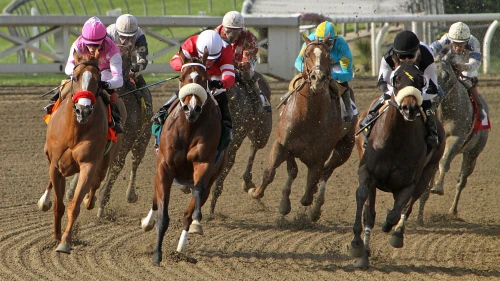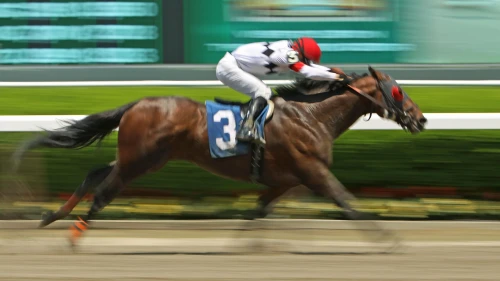
Football Manager Expert and Political Betting Specialist across Exchange and Spread Betting Sites
Competitive Intro
When deciding on a bet, just because you have followed the horse, or it ran well last time, or the trainer and jockey have an excellent strike rate can mean nothing unless you first consider all the other runners.
- Do you consider the opposition?
- Do you consider the standard of trainers in the race?
- Do you consider how the bookmakers have priced up the race?
- Do you consider the size of the field?
- Do you consider what grade of race it is?
- Is the race packed with the top jockeys?
- Will the going play a significant part in the race?
- Will the course favour or hamper your selection?
N.B
These and other questions you need to assess if you are going to find the best races to place a bet on. This competitiveness i feel is the key to successful value betting.

Master the Art of Value Betting and Maximize Your Winnings
Do you consider the size of the field?
The more runners in a race generally point to a more competitive race, not always, but in most cases. The more runners can hamper a hold-up horse, and there is more chance of trouble in running for your selection. You do get big field uncompetitive races, but if the word handicap is in the race title, then be thorough in your form study.
Do you consider the standard of trainers in the race?
The prize money is tempting for all trainers.
You should check the most valuable race of the day at all meetings as you can rest assured the "bigger" trainers will enter any horses they think suitable.
When i see O'Brian, Gosden, Hannon, Balding, Beckett, Haggas entries in a race at a "smaller track" i often give it a wide berth.

Do you consider how the bookmakers have priced up the race?
The bookmakers generally have the most information on a race, their contacts and in house and external odds compilers will have guided them to those horses that should be towards the head of their race markets.
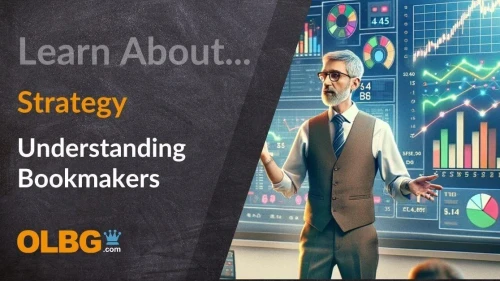
How Bookmakers Work and Create Odds
The tables below should guide you to their thinking.
Do you consider what grade of race it is?
Check the grades of race on the day and build a list from top to bottom.
- Group 1
- Group 2
- Group 3
- Class 1
- Class 2
- Class 3
- Class 4
- Class 5
- Class 6
- Class 7
Why not check each day how many races fall into each category and then look for the easiest race to solve from each different grade.
Is the race packed with the top jockeys
Like the trainers, you should check which races the top jockeys are riding in.
On the flat, Buick v Moore v Murphy v Doyle would point to a top-class competitive race, as would Cobden v Hughes v De Boinville over jumps.
Alternatively lets say Ryan Moore is at Kempton in the evening whilst Buick, Murphy and Doyle are at Goodwood in the afternoon,
Is Moore up against inferior jockeys and been booked in winnable races by shrewd trainers?

Will the going play a significant part in the race
Extremes of going, such as heavy, yielding, fast, and firm, may suit a host of horses.
If you have looked through the runners and see half the field suited to the current extremes of going, that can be another facet to note. The reverse is also true if only one horse is suited to the going.
Will the course favour or hamper your selection?
You should be able to check any course and distance winners, indicated by a C and D next to the horse's name on the racecard.
Many runners turn up over a few seasons, especially on the all-weather tracks.
Therefore, the race can be packed with the C and D abbreviations.
More than two would be a red flag for me when choosing a race to bet on.
Favourites Percentage
Below are two seven runner races on the same summer day in 2024.
| 3.40 Thirsk | OR | Odds | 6.25 Tipperary | OR | Odds | |
|---|---|---|---|---|---|---|
| Strong Johnson | 72 | 4.33 | January | 95 | 1.83 | |
| Law Of Average | 81 | 5 | Green Triangle | 89 | 3.75 | |
| Albegone | 68 | 5 | Beckman | 0 | 5.5 | |
| Arecibo | 80 | 5.5 | Dahlia Noir | 80 | 13 | |
| Abate | 81 | 6 | Sennas Girl | 0 | 17 | |
| Princess Karine | 77 | 8.5 | Bay Colony | 0 | 29 | |
| Project Dante | 80 | 17 | Grand Dante | 0 | 67 |
At 9.00 am in the Thirsk race, the favourite is 4.33 (around 20% of horses at this price win races) and has four other horses that could easily go off as favourites as the market evolves.
At 9.00 am, In the Tipperary race, the favourite is odds on (around 60% of odds on favourites win races).
The bookmaker's overround is 115.89% on the Thirsk Race
The bookmakers overround is 118.01% on the Tipperary Race.
What is an overround?
There is a 2% difference, but with the same number of runners;
As the day progresses, those odds and overrounds will alter as bets are placed and more race information comes into the bookmakers.
When you consider placing your bet, both races will have become more or less competitive.
The skill in backing is deciding whether to strike a bet or leave the competitive.race alone based on an odds v risk variable.

This competitiveness I feel is key to successful betting and finding betting value.
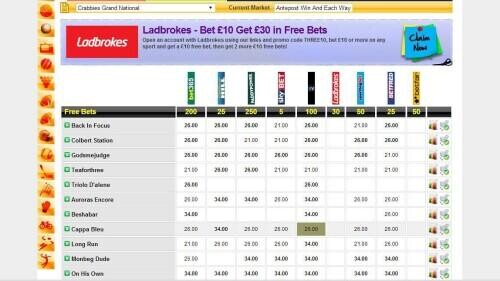
Naps Of The Day - How To Choose Value Selections
Just because you have followed the horse, or it ran well last time, or the trainer and jockey have a great strike rate when teaming up mean nothing unless you first take into account the other runners.
In handicaps, horses are rated by their ability, with the highest rated given the most weight to carry.
Handicaps are restricted to horses with ratings in a particular range, the weight it carries is decided by its rating and what class of race it is in.
On most weekdays with say 3 meetings there would be around 10 handicaps. The handicap ratings are produced by the BHA and raised or lowered depending on the horse's recent form.
Handicappers try to give each horse an equal chance of winning by allocating them different weights.
That last sentence means a handicap race is deliberately set up to give each horse a chance, the handicapper has made the race competitive deliberately.
If we compare favourites in handicaps compared to non-handicaps then favourites in non-handicaps win more often.
Below you can see a table from an average race day that featured three meetings, you can see by the 5-year stats that handicap races are not as favourable for favourites.
Favourites Win %
| Racecourse | Handicap | Non Handicap |
|---|---|---|
| Cheltenham | 19% | 40% |
| Uttoxeter | 29% | 42% |
| Lingfield A/W | 33% | 47% |
The average win % for all favourites over the last year is around 33%.
So back to the average race day, there is likely to around 10 handicaps and 10 non-handicaps. If we separate these races by handicap and non-handicap then the task becomes easier in rating competitiveness.
Then separate the different courses handicaps from non-handicaps and you are normally left with 3 of each or a 4-3 or 3-4 ratio.
So it would read something like this
Race Types
| Racecourse | Handicap | Non Handicap |
|---|---|---|
| Cheltenham | 3 | 4 |
| Uttoxeter | 3 | 3 |
| Lingfield A/W | 4 | 3 |
You can then breakdown and look at the price of favourites at each course and how they compare with each other in handicaps and non-handicaps
Example Prices
| Racecourse | Handicap | Non Handicap |
|---|---|---|
| Cheltenham | 5/1, 6/1, 7/1 | 6/4, 2/1, 11/4, 9/2 |
| Uttoxeter | 7/2, 5/1, 6/1 | 11/10,2/1,3/1 |
| Lingfield A/W | 3/1, 9/2, 5/1, 5/1 | 4/5, 2/1. 9/4 |
Position In Betting Market
| Position In Market | Win Percentage | Non - Handicaps | Handicaps |
|---|---|---|---|
| 1 | 33% | 40% | 28% |
| 2 | 19% | 22% | 18% |
| 3 | 12% | 13% | 12% |
The top 3 in the betting, for example, win around 65% of all races, when you look at the top 3 does the winner look like coming from 1 of them?
The percentages vary slightly from month to month but pan out along the above lines.
What Odds Are The Other Runners?
When you first look at that day's cards and the odds look at the relationship between the favourite and the other runners.
Is the favourite well clear of the other runners as in the top line below?
Is the favourite only just favourite as in the second line?
You can see that in the first line the second favourite is 9/2, but in the second line there are 4 horses under 7/2.
The second line race is incredibly competitive.
You should undertake this analysis across each card and look for the most and least competitive race of the day.
| Favourite Odds | 2nd Favourite | 3rd Favourite | 4th Favourite |
|---|---|---|---|
| 1/1 | 9/2 | 7/1 | 10/1 |
| 11/10 | 2/1 | 11/4 | 7/2 |
Here is an example at 12.00 PM of an Ascot racecard with the best odds for the favourite and second favourite.
| Race Time | Favourite Odds | 2nd Favourite Odds |
|---|---|---|
| 12.2 | Chantry House 4/6 | Pic Dorhy 11/4 |
| 12.55 | Time Flies By 5/4 | The Edgar Wallace 2/1 |
| 1.3 | Metier 11/8 | Gipsy De Choisel 9/4 |
| 2.05 | Red Risk 7/2 | Earl Of Cotswolds 9/2 |
| 2.4 | Buzz 10/11 | Ecco 9/2 |
| 3.15 | Mr Muldoon 11/4 | Pure Vision 7/1 |
| 3.45 | Apple Rock 10/3 | Certainly Red 9/2 |
By continually breaking down into smaller groups you can compare and contrast, and see where the prices and races indicate further investigation.
If you are backing or laying then always ask yourself is the race competitive?
Responsible Gambling
However you place your bets you should always do this responsibly. The following articles were written with this in mind.
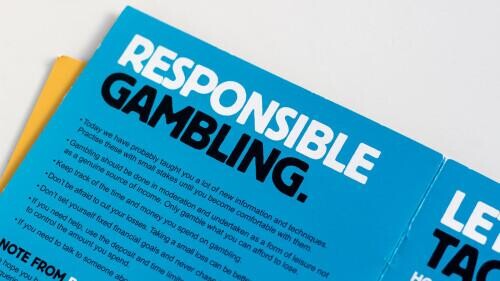
Responsible Gambling Features, Function and Help



